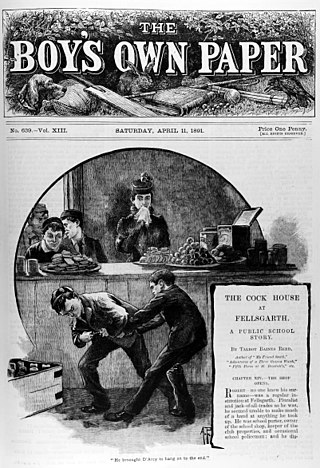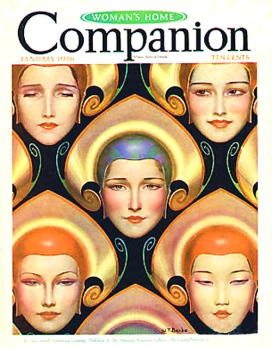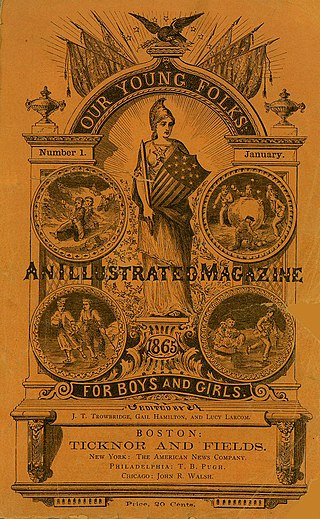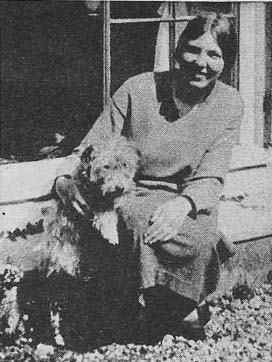Related Research Articles

Elizabeth Palmer Peabody was an American educator who opened the first English-language kindergarten in the United States. Long before most educators, Peabody embraced the premise that children's play has intrinsic developmental and educational value.

Sarah Josepha Buell Hale was an American writer, activist, and editor of the most widely circulated magazine in the period before the Civil War, Godey's Lady's Book. She was the author of the nursery rhyme "Mary Had a Little Lamb". Hale famously campaigned for the creation of the American holiday known as Thanksgiving, and for the completion of the Bunker Hill Monument.

Adeline Dutton Train Whitney was an American poet and prolific writer, who published more than 20 books for girls. Her books expressed a traditional view of women's roles and were popular throughout her life.

Lucretia Peabody Hale was an American writer and editor, best known for her humorous The Peterkin Papers stories.

St. Nicholas Magazine was a popular monthly American children's magazine, founded by Scribner's in 1873 and named after the Christian saint. The first editor was Mary Mapes Dodge, who continued her association with the magazine until her death in 1905. Dodge published work by the country's leading writers, including Louisa May Alcott, Frances Hodgson Burnett, Mark Twain, Laura E. Richards and Joel Chandler Harris. Many famous writers were first published in St. Nicholas League, a department that offered awards and cash prizes to the best work submitted by its juvenile readers. Edna St. Vincent Millay, F. Scott Fitzgerald, E. B. White, and Stephen Vincent Benét were all St. Nicholas League winners.

Mary Elizabeth Mapes Dodge was an American children's author and editor, best known for her novel Hans Brinker. She was the recognized leader in juvenile literature for almost a third of the nineteenth century.

Children's Digest was a monthly children's magazine published in the United States from October 1950 to May/June 2009, after which it was merged with Jack and Jill. The magazine was advertised as "selected reading to delight, instruct, and entertain," offering "the cream of new stories for boys and girls, reprints of the best-loved classics."

A story paper is a periodical publication similar to a literary magazine, but featuring illustrations and text stories, and aimed towards children and teenagers. Also known in Britain as "boys' weeklies", story papers were phenomenally popular before the outbreak of the Second World War.

Marguerite de Angeli was an American writer and illustrator of children's books including the 1950 Newbery Award winning book The Door in the Wall. She wrote and illustrated twenty-eight of her own books, and illustrated more than three dozen books and numerous magazine stories and articles for other authors.

Woman's Home Companion was an American monthly magazine, published from 1873 to 1957. It was highly successful, climbing to a circulation peak of more than four million during the 1930s and 1940s. The magazine, headquartered in Springfield, Ohio, was discontinued in 1957.

Our Young Folks: An Illustrated Magazine for Boys and Girls was a monthly United States children’s magazine, published between January 1865 and December 1873. It was printed in Boston by Ticknor and Fields from 1865 to 1868, and then by James R. Osgood & Co. from 1869 to 1873. The magazine published works by Lucretia Peabody Hale, Harriet Beecher Stowe, Horatio Alger, Oliver Optic, Louisa May Alcott, Thomas Bailey Aldrich, John Greenleaf Whittier, Henry Wadsworth Longfellow and Frances Matilda Abbott.
Anna Maria Wells was a 19th-century poet and a writer of children’s literature. The poet and editor Sarah Josepha Hale wrote that Wells, as a child, had a "passionate love of reading and music," and began to write verses when very young. In 1830, Wells published Poems and Juvenile Sketches, a compilation of her early work, after which she contributed occasionally to various periodicals. Hale opined that "the predominant characteristics of [Wells'] poetry were tenderness of feeling, and simplicity and perspicuity of language." Wells' contemporaries, in addition to Sarah Hale, were Caroline Howard Gilman, Hannah Flagg Gould, Eliza Leslie, Catharine Maria Sedgwick, and Lydia Huntley Sigourney
Eliza Anna Farman Pratt (1837–1907) was an American writer of children's literature, best known for editing Wide Awake magazine for 16 years, starting in 1875.

Wide Awake was a monthly American children's magazine, founded in 1875 by Daniel Lothrop. It published stories written by Margaret Sidney, Edward Everett Hale, Sarah Orne Jewett, Elizabeth Stuart Phelps Ward, and Mary Eleanor Wilkins Freeman. Wide Awake was illustrated by many well known artists including Howard Pyle, William Thomas Smedley, Sol Eytinge Jr. and Frank T. Merrill. The magazine was based in Boston.
Genie M. Smith was an American author and publisher.

Constance Winifred Savery was a British writer of fifty novels and children's books, as well as many short stories and articles. She was selected for the initial issue of the long-running series entitled The Junior Book of Authors (1951–2008) and for the first, 1971, volume of Anne Commire's Something About the Author, which reached volume 320 in 2018. Savery's World War II novel, Enemy Brothers, received praise and remains in print. In 1980, at age eighty-two, she completed a Charlotte Brontë two-chapter fragment, which was published as "Emma by Charlotte Brontë and Another Lady". The book was translated into Dutch, Spanish, and Russian.

Clara Doty Bates was a 19th-century American author who published a number of volumes of poetry and juvenile literature. Many of these works were illustrated, the designs being furnished by her sister. Her work was published in St. Nicholas Magazine, The Youth's Companion, Golden Days for Boys and Girls, Wide Awake, Godey's Lady's Book, and Peterson's Magazine. During the World's Columbian Exposition, she had charge of the Children's Building. Bates died in 1895.
J. E. McConaughy was the pen name of Julia Eliza McConaughy, a 19th-century American litterateur and author. She was one of the largest contributors to religious literature of her day, writing a number of brief articles, making valuable contributions to Sunday school literature. She was also the author of 14 books and of 8,000 articles for 75 periodicals. With such favor were her writings received by the public that they were frequently copied by other papers, and ran the rounds of the press, both in the United States and at times in England. The editor of one journal to which she was a constant contributor, through many years, and among a corps of distinguished writers, informed her that she was the only contributor from whom he had never refused an article. She invariably refused to write for secular papers for the sake of higher remuneration, where her religious aim would have to be sacrificed or abriged.

Charles Stuart Pratt (1854–1921), who sometimes wrote under the pen names of C. P. Stewart and C. P. Stuart, was an American writer of children's literature, best known for being the art editor of Wide Awake magazine for 16 years, starting in 1875. He edited children’s magazines for 30 years, and for most of that time he worked with his wife, Ella Farman Pratt.

Sarah Preston Everett Hale was an American diarist, translator, columnist and newspaper publisher.
References
- 1 2 The Peterkin Papers - (Not so) Shocking Secrets of the Hale Family, New England Historical Society
- 1 2 Lucretia Peabody Hale, Online Encyclopedia Britannica
- ↑ R. Gordon Kelly, Children's Periodicals of the United States, pages 331, 332, 341, Greenwood Press, 1984
- ↑ Lucretia P. Hale, The Peterkins Are Obliged to Move, St. Nicholas Magazine for Boys and Girls, May 1878, pages 458-461
- ↑ Lucretia P. Hale, The Peterkin Celebrate the Fourth of July, The St. Nicholas Anthology, pages 12-16, Greenwich House, 1983
- ↑ Lucretia P. Hale, About Elizabeth Eliza’s Piano